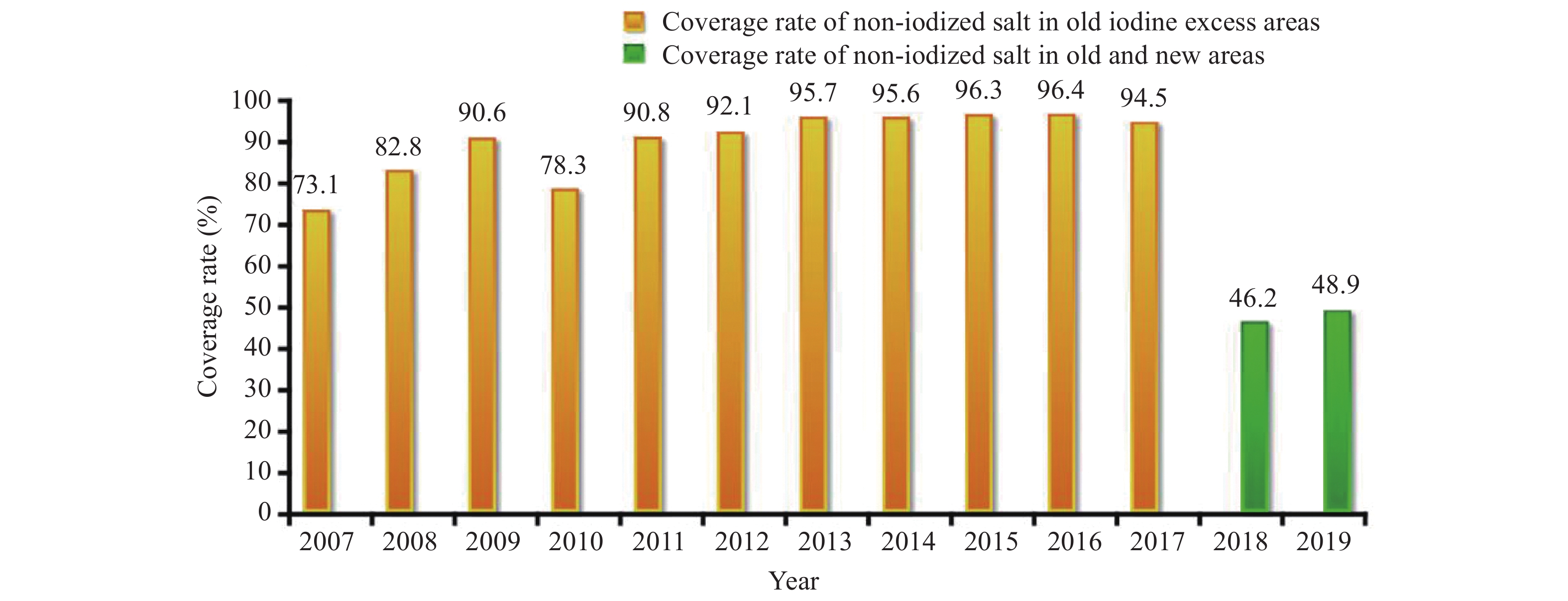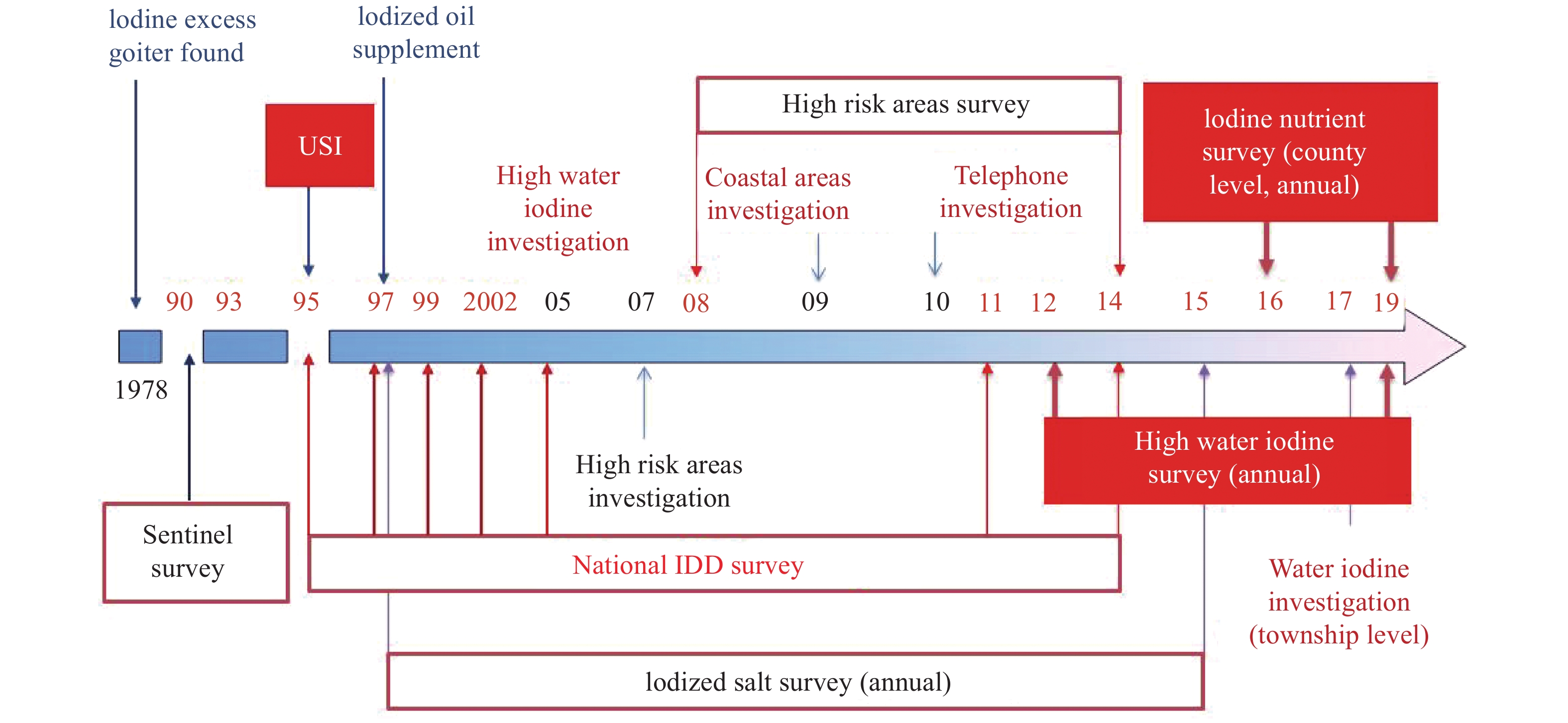HTML
-
Iodine is an essential micronutrient for the human body and an important raw material for the synthesis of thyroid hormones. Thyroid hormones maintain the basic activities of the body and have different effects on almost all systems of the body by promoting growth and development, participating in brain development, regulating metabolism, and impacting most organs and system functions. Thyroid hormones can promote the synthesis and catabolism of protein, fat, and sugar; enhance substance metabolism and energy metabolism by increasing oxygen consumption, generating energy, and influencing basal metabolic rate; and maintain body temperature.
Iodine is rapidly and completely absorbed in the upper segment of stomach and intestine, and after blood iodine is absorbed by the thyroid, iodine is concentrated and thyroid hormone is generated. Iodine in the human body is mainly excreted from urine but can also be excreted through breast milk to supply iodine to infants. Iodine is mainly provided to the human body from various foods and drinking water, and a lack of iodine will cause iodine deficiency disorders (IDD). During a critical period of brain development, the development of the nervous system depends on thyroid hormone, so an iodine deficiency in this period will lead to different degrees of brain development retardation (such as endemic cretinism, etc.), which is irreversible even if iodine or thyroid hormone is supplemented later.
Iodine excess is a state in which iodine intake significantly exceeds the human body’s requirement, and the main cause in China is iodine excesses in sources of water in addition to excesses in food and drugs. Iodine excess can lead to goiter, hypothyroidism, etc., and also can have adverse effects on the health of pregnant women and pregnancy outcomes. However, there is no definite evidence that excessive iodine intake is related to an increased risk of thyroid cancer.
IDD was once a global problem. The most popular iodine supplement measure is salt iodization, but other measures include eating iodine-rich foods and taking iodine-containing nutrient supplements, oral drugs, or iodine oil pills, etc. However, salt iodization is the safest and most effective measure recommended by the World Health Organization (WHO) to control IDD. Currently, more than 120 countries have implemented salt iodization policies, and at least 97 countries have enacted laws, regulations, or food safety standards to support salt iodization. Beyond salt iodization, some marine products have higher iodine contents, such as kelp, laver, hairtail, dried scallop, etc.; milk has varying levels of iodine depending on brand; and plants, especially fruits and vegetables have the lowest iodine content. When choosing an iodine supplement measure, iodized salt should be considered first, followed by iodine-rich foods, and then iodine-containing nutrient supplements. In areas with serious iodine deficiency issues, iodized oil pills can be given to women at childbearing age, pregnant women, and lactating women when iodized salt prevention measures cannot be effectively implemented (1).
-
China previously had a widespread and severe IDD problem. According to an investigation in the 1970s, all provincial-level administrative divisions (PLADs) in China, except Shanghai, have had an incidence of IDD to some degree. Since the 1950s, salt iodization was launched in some endemic areas, which has effectively curbed the IDD epidemic. In 1991, the Chinese Government signed the United Nation’s World Declaration on the Survival, Protection, and Development of Children, and thereafter made a commitment to eliminate IDD by the year 2000. In 1993, China’s State Council convened a “Mobilization Meeting to Achieve the Goal of Eliminating IDD by 2000” and adopted the “China’s Plan for Eliminating IDD by 2000”. The country adopted a series of prevention and control strategies focused on universal salt iodization (USI). Subsequently, it promoted the “Regulations on Eliminating the Harm of IDD by Salt Iodization” and “Regulation on Salt Monopoly”, etc., thus providing a reliable legal guarantee for the prevention and control of IDD. Subsequently, a surveillance system of IDD has been established step by step, which has key roles for making decision during the prevention and control progress (Figure 1). According to the surveillance results, the iodine content in salt was adjusted several times to reach adequate levels of iodine for the population (Figure 2).
Progress of Universal Salt Iodization in China
-
By the year 2000, China has basically achieved the goal of eliminating IDD at the national level. In 2010, 28 PLADs had achieved the goal of eliminating IDD, while Tibet, Qinghai, and Xinjiang had achieved basic compliance levels for eliminating IDD. By the end of 2015, 94.2% of counties in the country had achieved the goal of eliminating IDD according to the final assessment results of the 12th Five-Year Plan for the Prevention and Control of Endemic Diseases. The 2019 IDD surveillance showed China attained sustainable elimination status of IDD at the national level. The national median urinary iodine of children aged 8–10 years was 207.1 µg/L, which exceeded the standard of being over 100 µg/L. The median urinary iodine of children in 2019 was similar to that of 2016–2018 and lower than that of 1997, 1999, 2002, 2005, and 2011 (Figure 3A). The incidence of goiter in children was 1.5%, which was lower than the 5% requirement and showed a decrease since 2005 (Figure 3B). The median urinary iodine of pregnant women was 169.4 µg/L, which was over the lower adequate limit level of 150 µg/L (median urinary iodine of pregnant women being between 150–249 µg/L is defined as having adequate iodine). The coverage rate of iodized salt was 95.9% and the consumption rate of qualified iodized salt was 90.2%, which indicated a sustained high level since 2005 (Figure 3C). All indicators meet the national standard for IDD elimination. Combined with previous surveillance results, China has been in a state of sustainable IDD elimination since 2005. The implementation of USI has not only eliminated IDD in China but also greatly improved the iodine nutrition of the population (2-12).
-
In addition to areas with iodine deficiencies, 110 counties, cities, and districts in 8 PLADs still had excess iodine in water sources. These 110 areas were initially found by the 2005 Excess Iodine Water Sources Survey and were still found to have issues in a resurvey in 2012. China currently implements the strategy of supplying non-iodized salt to areas with excess iodine in water sources and monitors the implementation of these measures every year. The coverage rate of non-iodized salt is sustained at above 90% in iodine excess areas from 2011 to 2017 (Figure 4). In 2017, a nationwide investigation on iodine content in drinking water was organized, and the survey results showed that although China had the largest known range of areas with excess iodine in naturally occurring water sources in the world, it was still a country with widespread iodine deficiency in the natural environment. Some newly found iodine excess areas joined the surveillance system and subsequently decreased the coverage rate of non-iodized salt in 2018 and 2019 (13).
 Figure 4.
Figure 4.The coverage rate of non-iodized salt in water-borne iodine excess areas. The data in 2018 and 2019 included new areas found in a 2017 water iodine investigation.
To clarify further, areas with excessive iodine in water sources refers to areas where water iodine exceeds 100 µg/L, and local measures involve the promotion of non-iodized edible salt. Within this classification, areas where the rate of goiter in children aged 8–10 years is greater than 5% are referred to as areas with diseases related to excessive iodine in water sources, and local measures directly target water improvements (14).
-
The general population of China still has a sustained adequate supply of iodine nutrition, but special populations still face the risks of iodine deficiency. China is facing a dual challenge because the prevention and control of IDD is more arduous and complicated than ever before. First, due to the effective implementation of salt iodization measures, serious diseases like cretinism and goiter have become relatively rare, and people are no longer as aware of the harm of iodine deficiency and awareness levels gradually decrease. Second, with advancements in the reform of the salt industry system, various salts have been supplied to the market making it easier for residents to buy non-iodized salt. On the other hand, China has the largest known range of areas with high iodine in water sources in the world. Residents living in these areas will be endangered or threatened by iodine excesses that can result in goiter and subclinical hypothyroidism.
| Citation: |




 Download:
Download:






